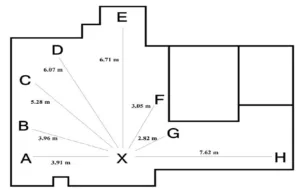The topic of this Display Daily article derives from recent publication reporting an investigation conducted by a team led by Michael L. Wilson of the U.S. Army Aeromedical Research Lab (Fort Rucker, AL). The team also included personnel from Clemson University. The researchers explain the purpose of their investigation with the statement that “Virtual environments are frequently used in training. However, virtual environments can cause simulator sickness. Prior work has examined the role of varying latency in simulator sickness however the effect of varying latency on task performance has not been examined.”

To address this deficiency, the team undertook a study as to how varying latency in a Head Mounted Display (HMD) affects user accuracy and time-to-hit targets.
The most recent article on this topic published by the team is entitled “Task performance in a head-mounted display: The impacts of varying latency.” It is to be published in Displays, Volume 61, January 2020, 101930. A copy of the article can be found here.
First, a little background information paraphrased from the team’s article.
System latency is the time it takes for a real-world event to be sensed, processed and displayed to the user. Latency is typically in the range of tens to hundreds of milliseconds. In virtual reality systems, latency has been shown to causes control problems for users. (We’ll have an article on a solution to this in a few days – but the news is under embargo – Editor) The way in which latency complicates a user’s ability to perform tasks can be attributed to the introduction of a delay in feedback which, in turn, can slow down the response time of the virtual display user. Feedback delays create a conflict because users cannot reliably use feedback from their actions to correct their behavior.
The team’s publication discusses in detail the rationale, set up and results of the study. Highlights include the following. Thirty subjects participated in a repeated measures study. Subjects were exposed to two different latency conditions while wearing a HMD. In one set of experiments, the latency was a constant 70 ms. In the other, the latency was varied between 70 and 270 ms. During each HMD exposure, subjects used a laser pointer to repeatedly shoot at targets while accuracy and time-to-hit were recorded. The figure below illustrates the footprint and room layout for the object location and targeting task.
Footprint and room layout for the object location and targeting task.
Results of the tests showed that subjects scored fewer hits and took longer to hit targets under conditions of varying latency. Generalizing, these findings indicate that individuals exposed to conditions of varying latency perform worse than individuals exposed to a lower but constant latency. This finding was found to persist even when results were corrected for the difference in mean latency.
These result are explained by the researchers by the observation that individuals are known to be capable of calibrating to constant perceptual perturbations. On the other hand, when perturbations vary, individuals cannot calibrate and, therefore, performance can be more affected.
In the conclusion of their article, the researchers observe that it is “unclear if the performance decrements associated with the different latency conditions were due to the characteristics of the latency itself, or at least partially due to another underlying causal influence such as motion sickness.” They go on to suggest that future investigation should try to separate and better understand the effects of latency and sickness on performance. -Arthur Berman
E.R. Muth, Psychology Department, Clemson University, [email protected]

